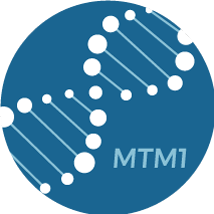Looking ahead to a brighter future for XLMTM
X-linked myotubular myopathy (XLMTM) is a life-threatening, monogenic neuromuscular disorder requiring early and intensive medical intervention from birth. Current research aims to identify new therapies, some of which target the underlying cause of disease.
XLMTM overview
XLMTM affects approximately 1 in 40,000 to 50,000 newborn males.1,2 It is caused by mutations in the MTM1 gene that result in the absence of, or dysfunctional, myotubularin protein and lead to profound muscle weakness and hypotonia, resulting in severe respiratory insufficiency.1,3
XLMTM may also be referred to as4:
- Myotubular myopathy (MTM)
- X-linked centronuclear myopathy (XLCNM)
- XL-MTM
- X-MTM
Mechanism of Disease

Deepening your understanding of the underlying cause of this rare disease can help you guide patients and their caregivers toward better outcomes.
Impact of XLMTM

High rates of XLMTM morbidity and mortality significantly impact patient and caregiver lives and place a substantial burden on the healthcare system.3,5,6
Diagnosis of XLMTM

Profound hypotonia, respiratory insufficiency, family history, and clinical hallmarks can assist in diagnosis, which can only be confirmed via genetic testing.3,4,7,8

